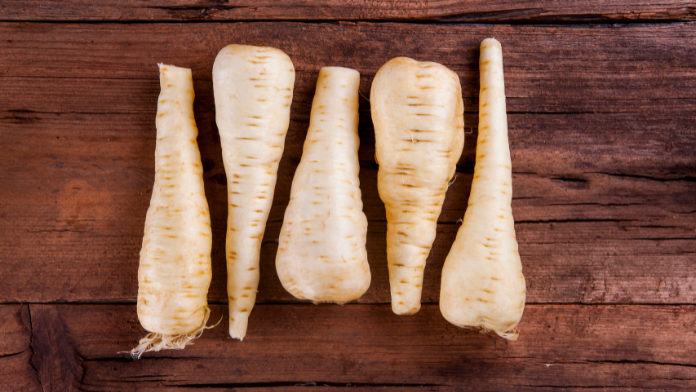Less popular than the carrot, which it resembles in appearance and structure, the parsnips It has a slightly sweetish flavour. Its taste, its nutritional properties and its culinary versatility make it an interesting ingredient to rediscover. Here’s why you should try it.
What is parsnip?
The Parsnip sativa it is a herbaceous plant that belongs, like the carrotto the family of Apiaceae. His rootwhich has a ivory-white colour it’s a elongated shape, is the part most commonly used for food consumption. Despite belonging to the same family, parsnips and carrots differ in flavor and texture, as well as nutritionally.
Although its use and availability vary depending on traditions or regions, parsnip may not be very well known and widespread in Italy. This could partly be attributed to the spread of the potato and other vegetables, more present in Italian cuisine, which have surpassed it in terms of popularity and use.
Nutritional values and properties
100 grams of raw parsnip provides approximately 75 calorie79.5 grams of water.18 grams of carbohydrates, 4.8 grams of sugars, 1.2 grams of proteins and 0.3 grams of lipids. Parsnip is a source of fibre (4.9 grams per 100 grams), which give a sense of satiety and help improve intestinal regularity, and antioxidants, which serve to combat the damage caused by free radicals. Contains vitamin Cwhich contributes to strengthening the immune system, B vitamins e Vitamin K. Furthermore, it is a good source of potassium and others minerals come phosphorus, calcium and magnesium.
Generally the consumption of this food is considered safe, except in the case of hypersensitivity reactions in predisposed subjects. In any case, if you take medications, have allergies or particular medical conditions, in case of doubt you can still consult your doctor.
If you grow and harvest parsnips, you must pay attention above all to skin irritations that can be caused by contact of the skin, subsequently exposed to sunlight, with the photosensitizing compounds contained in the leaves and shoots of the plant. Which is why it is good practice to wear protective gloves when handling them.
How to choose and store it
When buying parsnips it is advisable to choose smooth and firm roots, which do not have dents. Also, more parsnips small or medium sized they usually tend to be more tender. This root can be keep in the fridgepreferably in the vegetable drawer.
Parsnips: uses in cooking
Soups, stews, purees, veloutés or salads: various recipes can be prepared with parsnips. When cooked, its flavor naturally becomes sweeter. For example, you can bake, steamed o to fry and combine with other vegetables to cook excellent dishes Side Dishes. Furthermore, parsnips can be used to make delicious dishes crispy chips.
An ideal recipe to pamper yourself during the winter is velvety of parsnip, in which the root mixes with other ingredients such as potatoes, onions and vegetable broth, and then blends everything until it obtains a smooth and creamy consistency.
